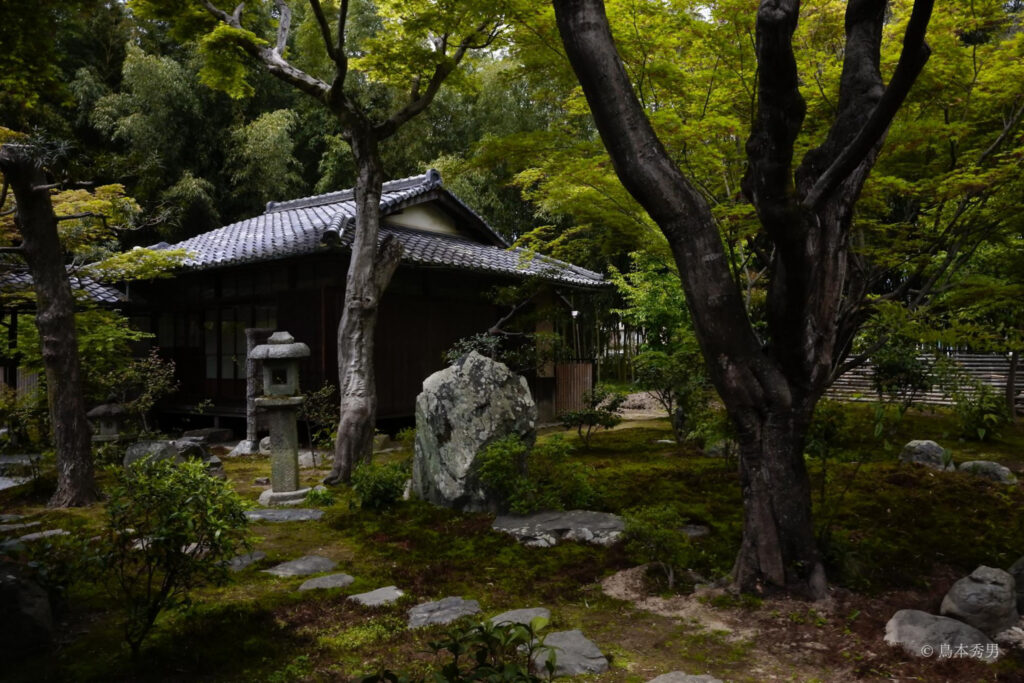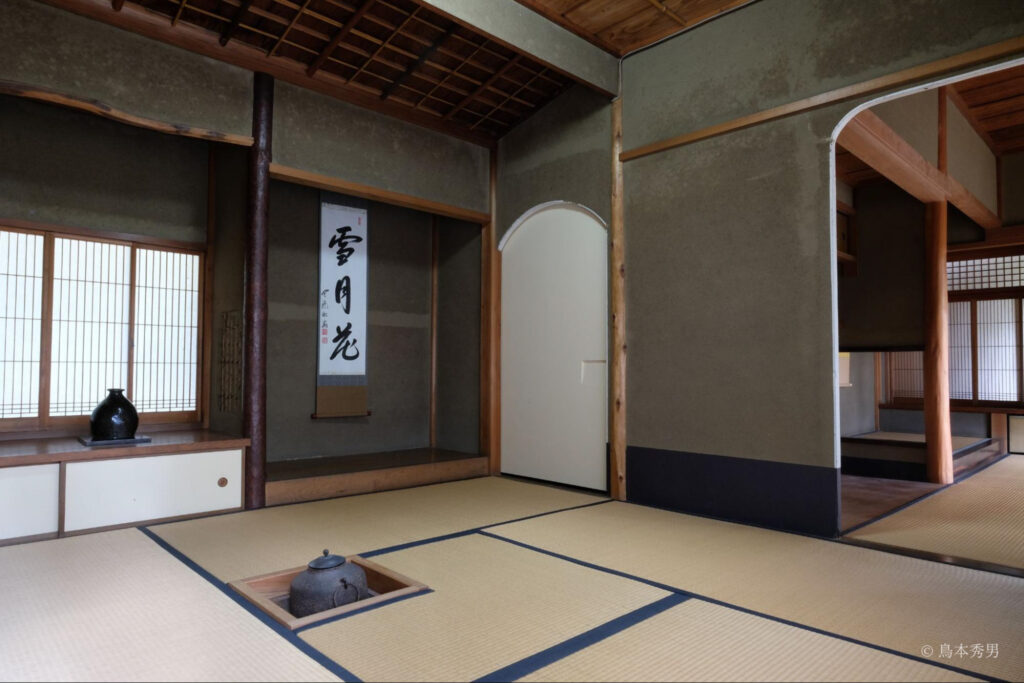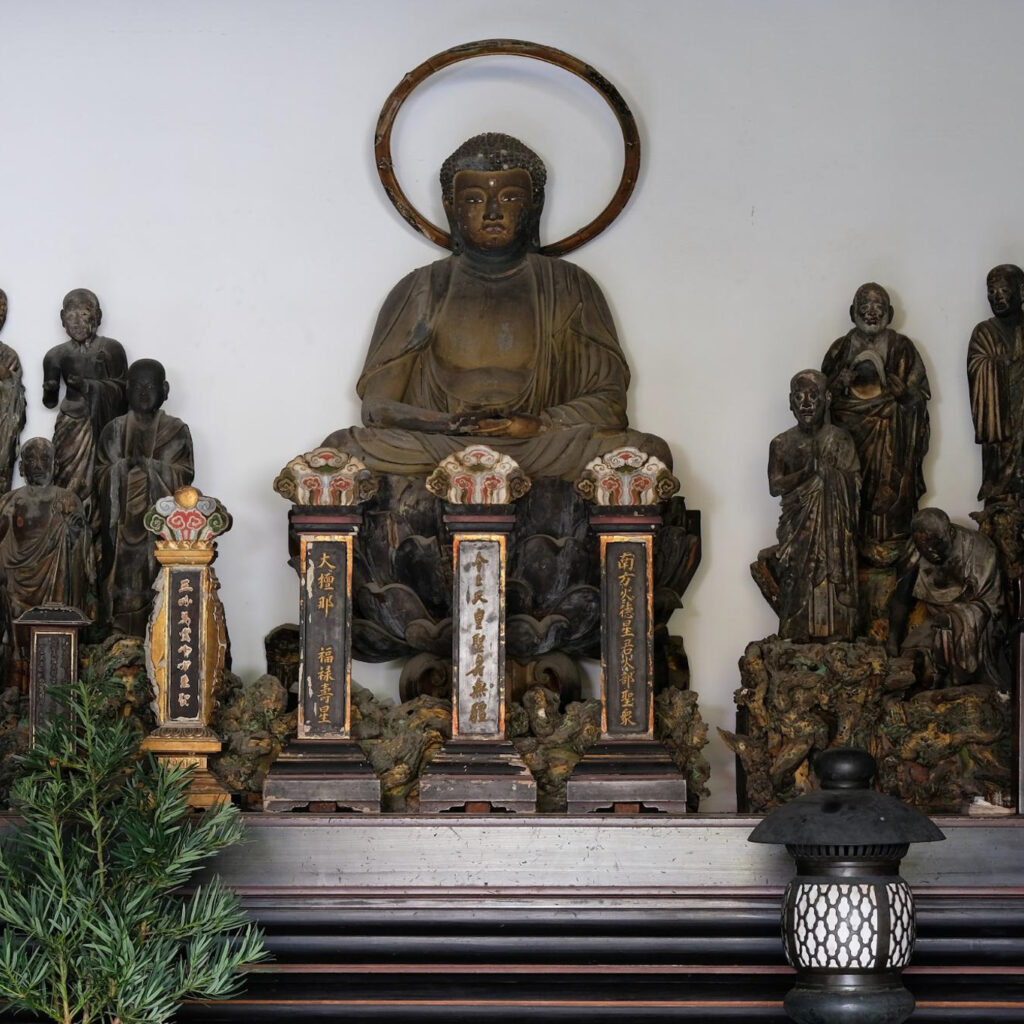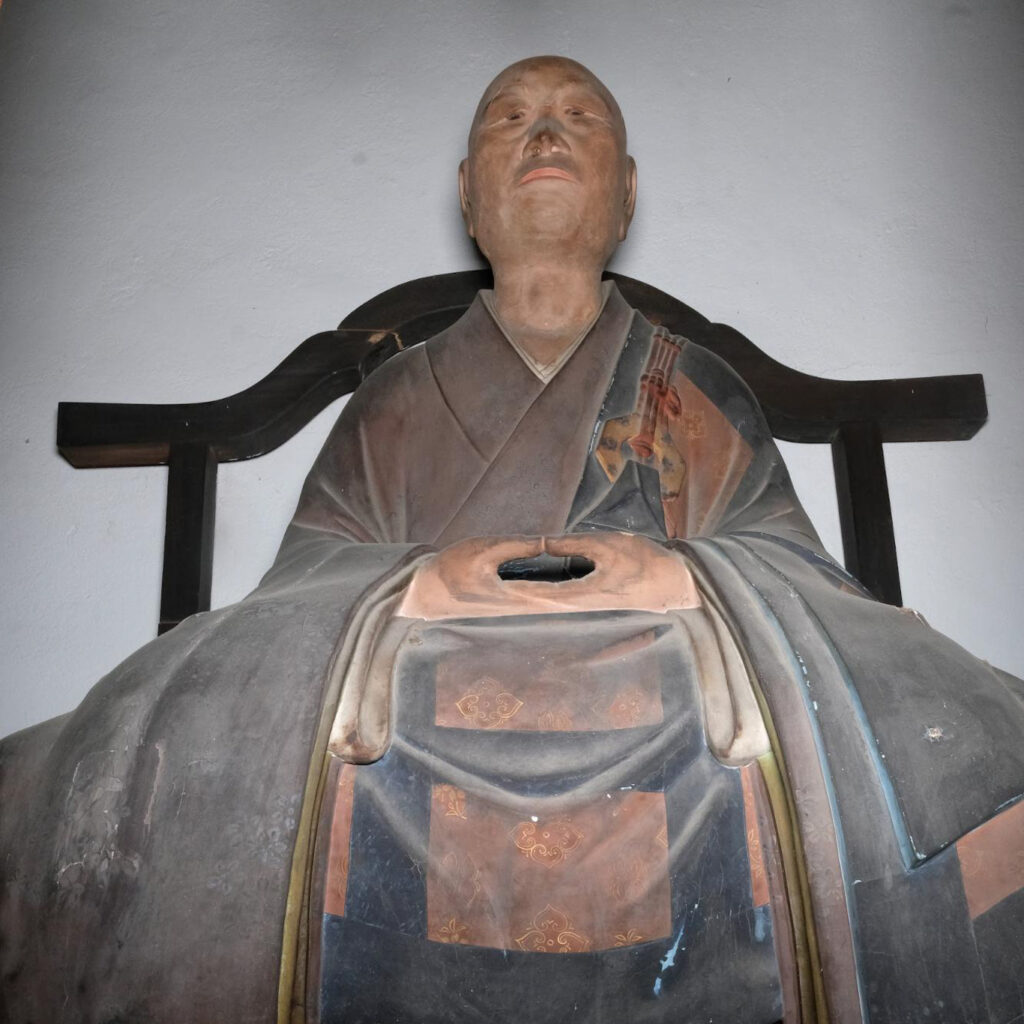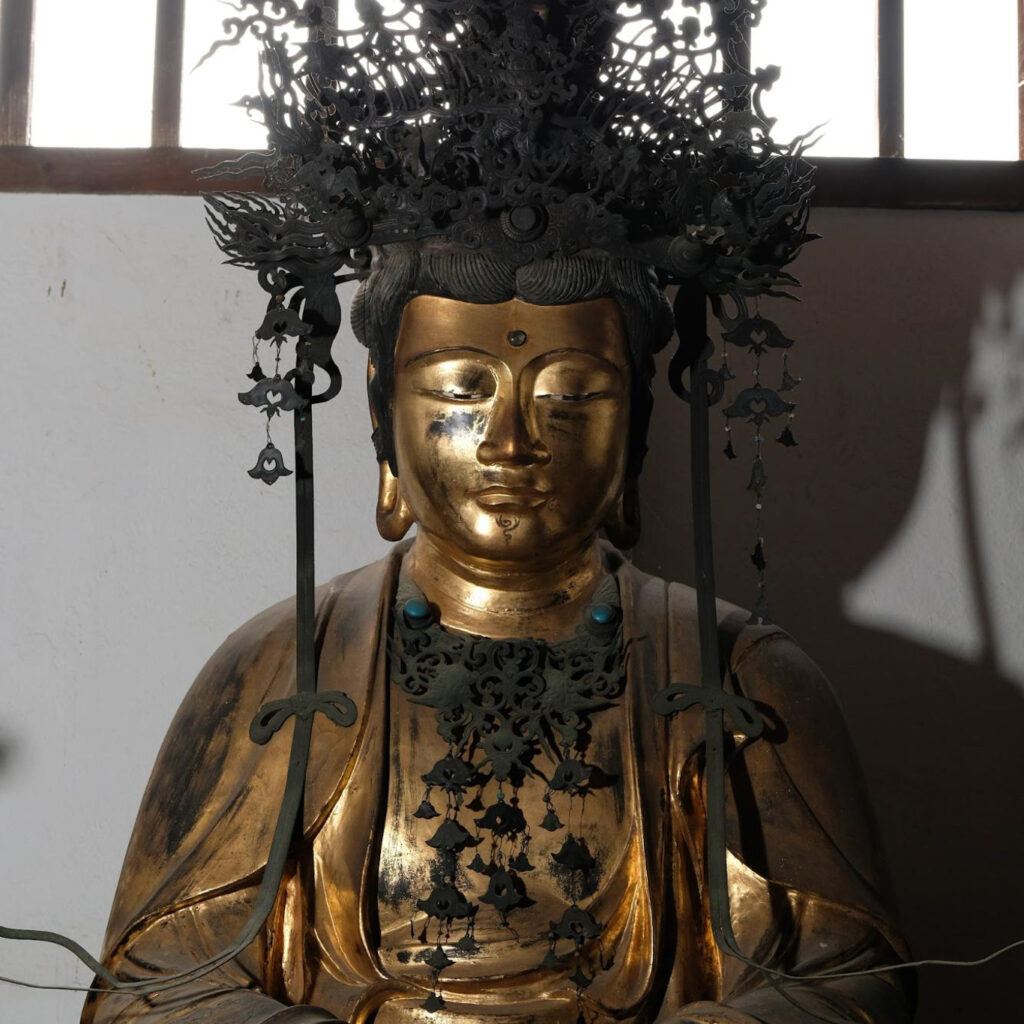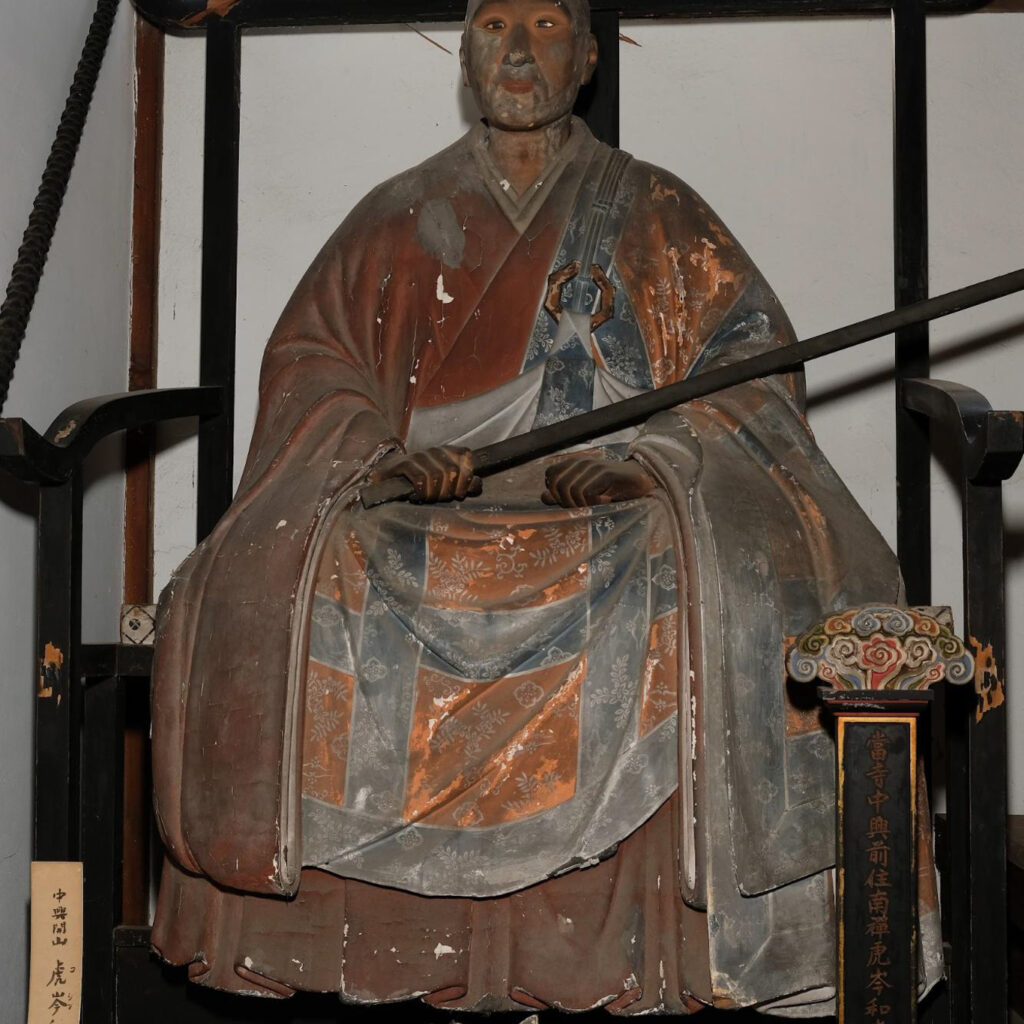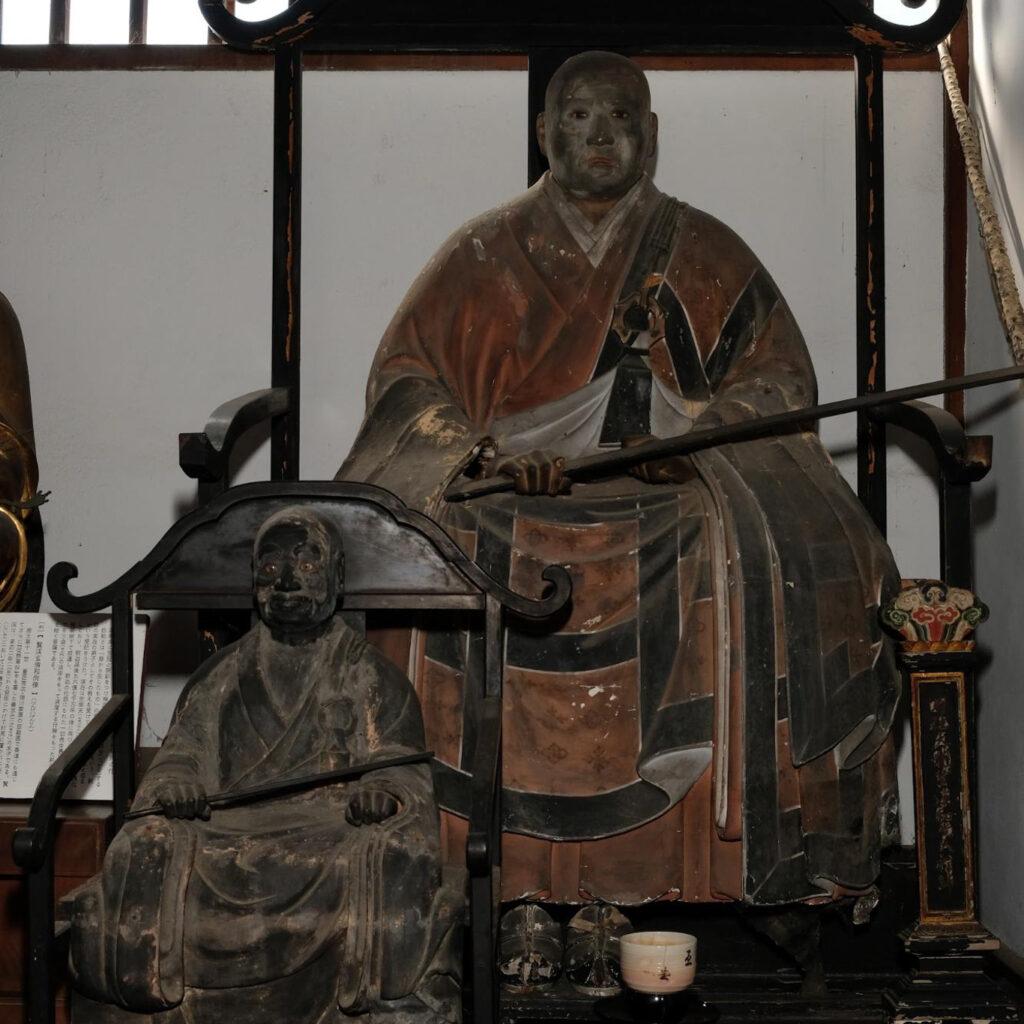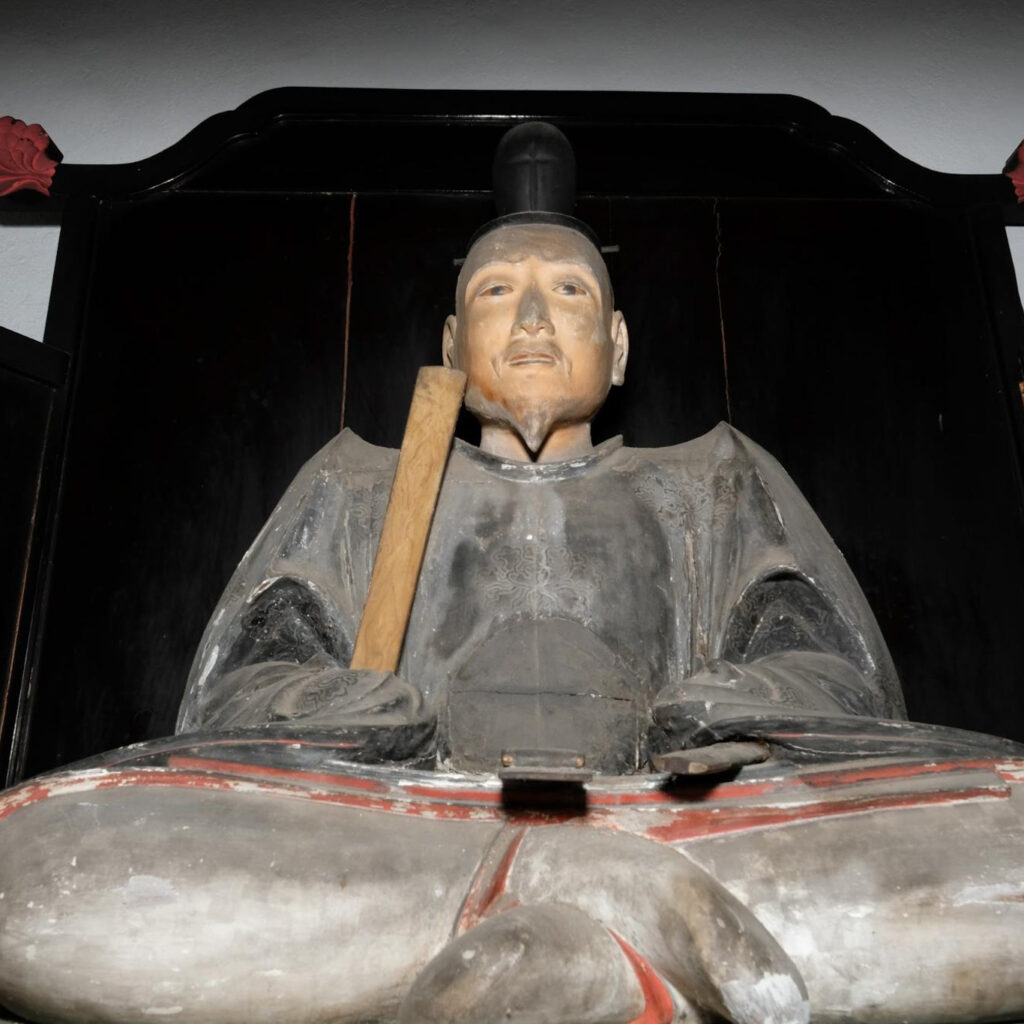
Temple Grounds

山門 - Mountain Gate
The Mountain Gate is designed in the Kirizuma style with Hon-gawara roofing, featuring a four-legged ridge gate. It is the only structure that remains from the temple's original construction in 1379 and was initially part of Hōzō-ji Temple. This style of gate became obsolete after the Keichō era, making it a rare surviving example of medieval architecture. The wooden sign inscribed with "Kakuyūzan" is the handiwork of the temple's founder, Ashikaga Yoshimitsu. The pathway from the Mountain Gate to the Inner Gate is lush with moss, bamboo groves, camellias, and autumn leaves, and also features the renowned Tendai Ukōyaku trees. The esteemed monk Ikkyū Sōjun passed through this gate in 1405 as a young boy to hear teachings on the Vimalakirti Sutra.
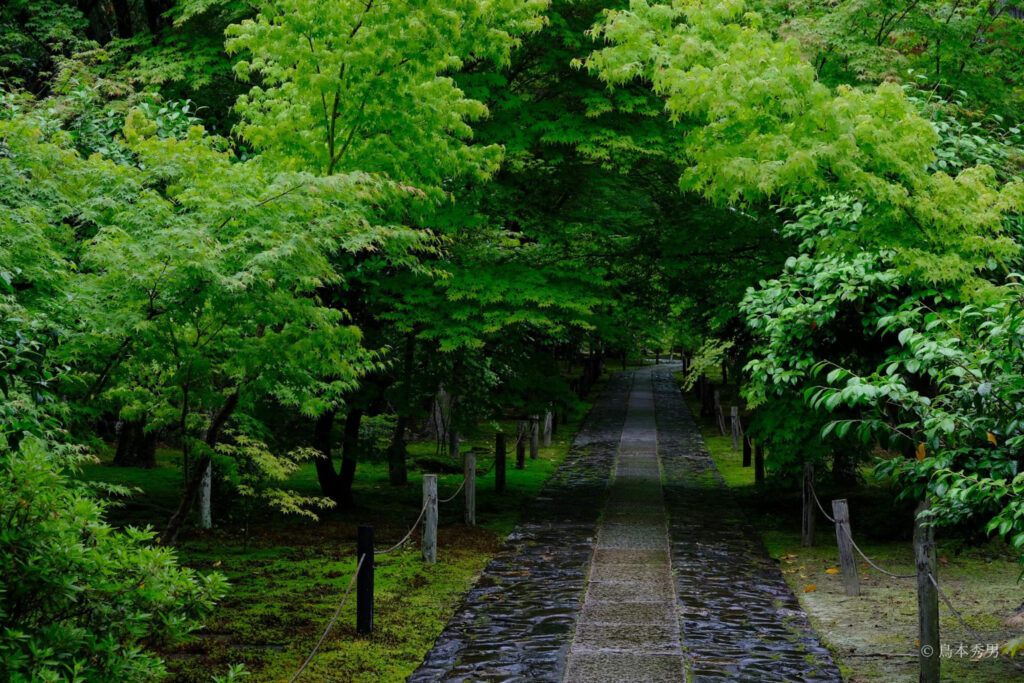
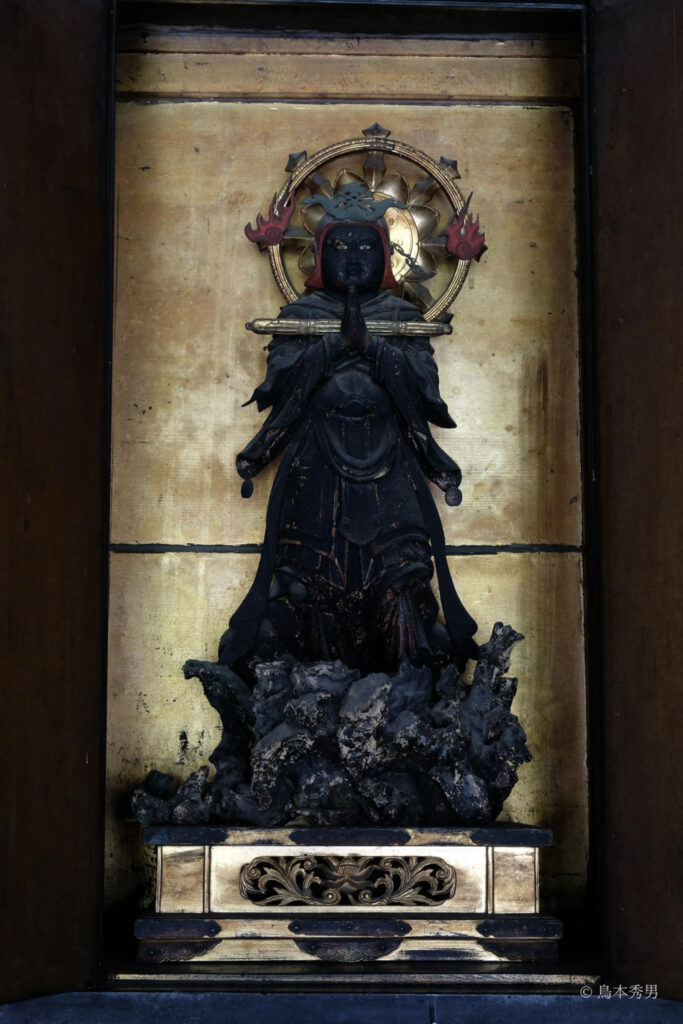
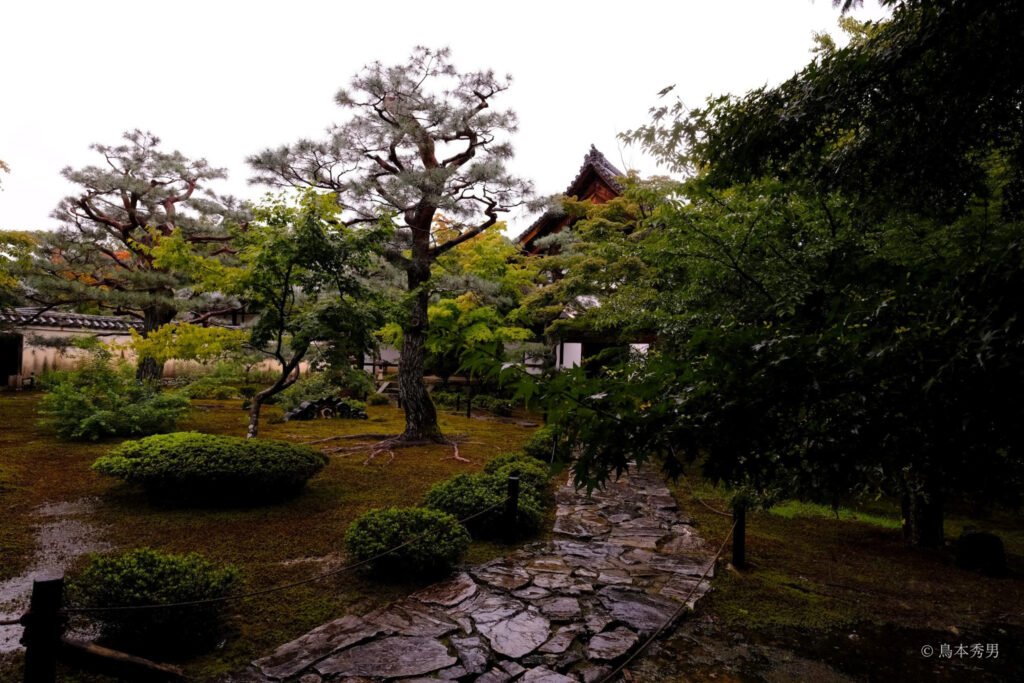
庫裡 - Monks' Quarters
Reconstructed by Kosen Hōshin in the 1660s, the entrance features a statue of Vaiśravaṇa, a guardian deity unique to Zen temples. Though the statue's creator and creation year are unknown, it is believed to date back to the early Edo period based on its carving technique.
本庭 - Main Garden
The Main Garden is a flat karesansui moss garden that incorporates the scenic Arashiyama as its backdrop. Designated as a scenic beauty of Kyoto, the garden features an arrangement of stones centered around the Three Honored Ones and Zazen stones. A Mokkoku tree, aged over 300 years, adds an ancient touch. The garden also features Sāla trees, known for their blossoms that are said to have bloomed simultaneously at the moment of Buddha's passing and are symbolized in "The Tale of the Heike" as representing the Buddhist truth of impermanence. The garden was landscaped around 1763.
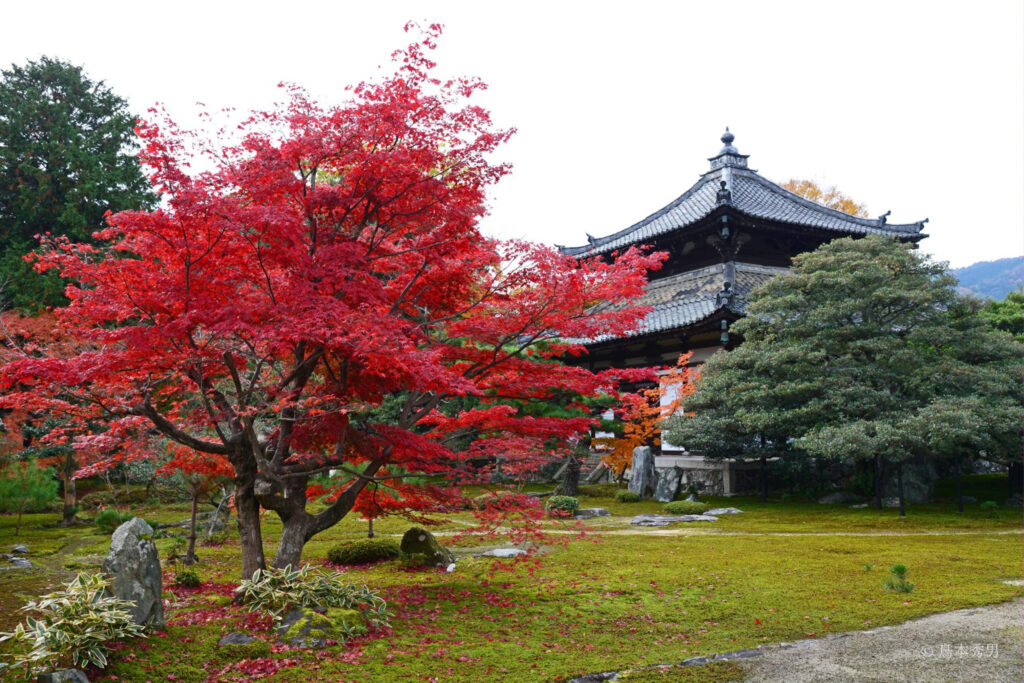
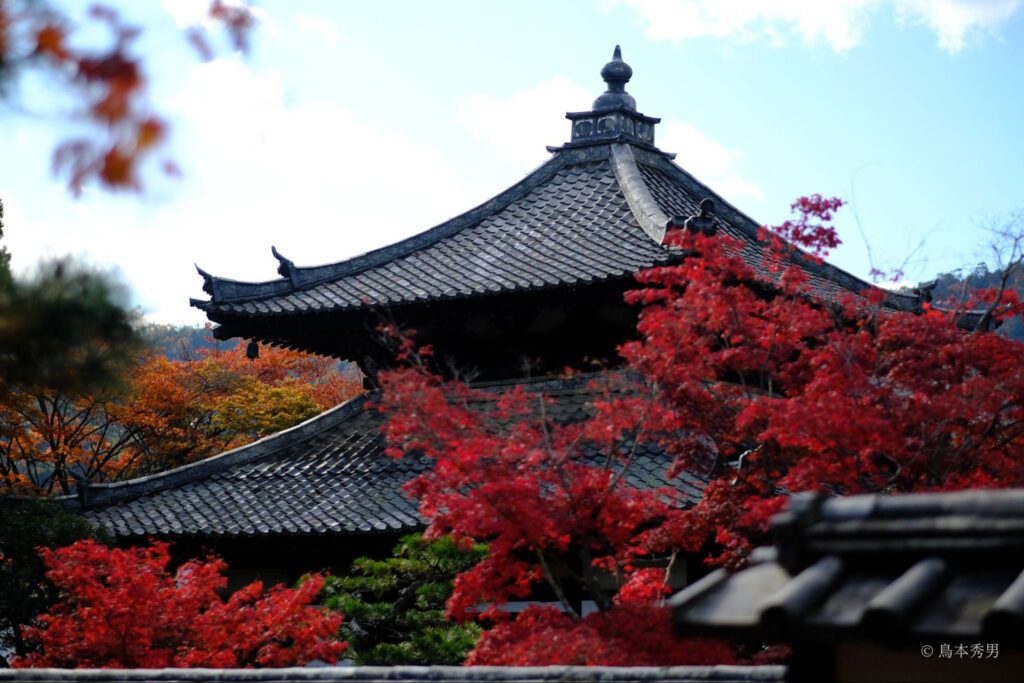
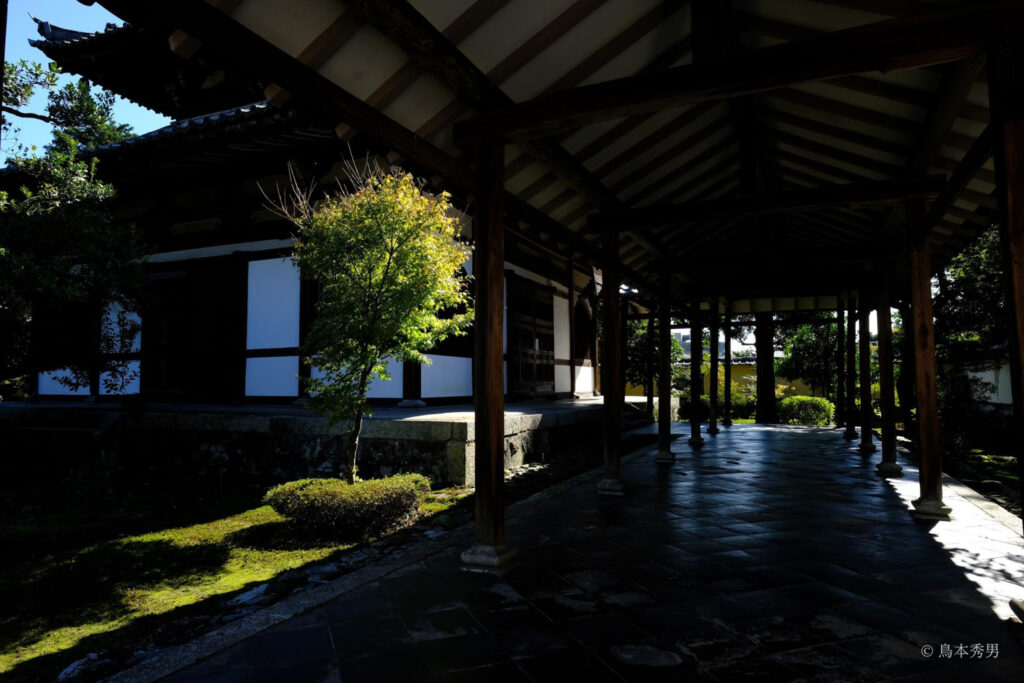
Reliquary Hall
Located at the heart of the Main Garden, the Reliquary Hall is accessible via a corridor extending from the Guest Hall. Built in a two-tiered pagoda style with Zen architectural elements, it was relocated to its current position in 1763. The hall enshrines a relic of the Buddha's tooth within a gilded copper pagoda. The Four Heavenly Kings are placed around it, and the ceiling features a dragon painting, symbolizing the rain of Dharma.
Guest Hall
Constructed in 1890, the single-story Guest Hall features a hipped-and-gabled roof. The wooden plaque bearing the name "Rokuouin" is also handwritten by Ashikaga Yoshimitsu, and was originally hung at the temple's Mountain Gate. The seal "Tenzan" is Yoshimitsu's Dharma name, and "Jun-San-Kō" is an honorific title rarely granted outside of the imperial and regent families.
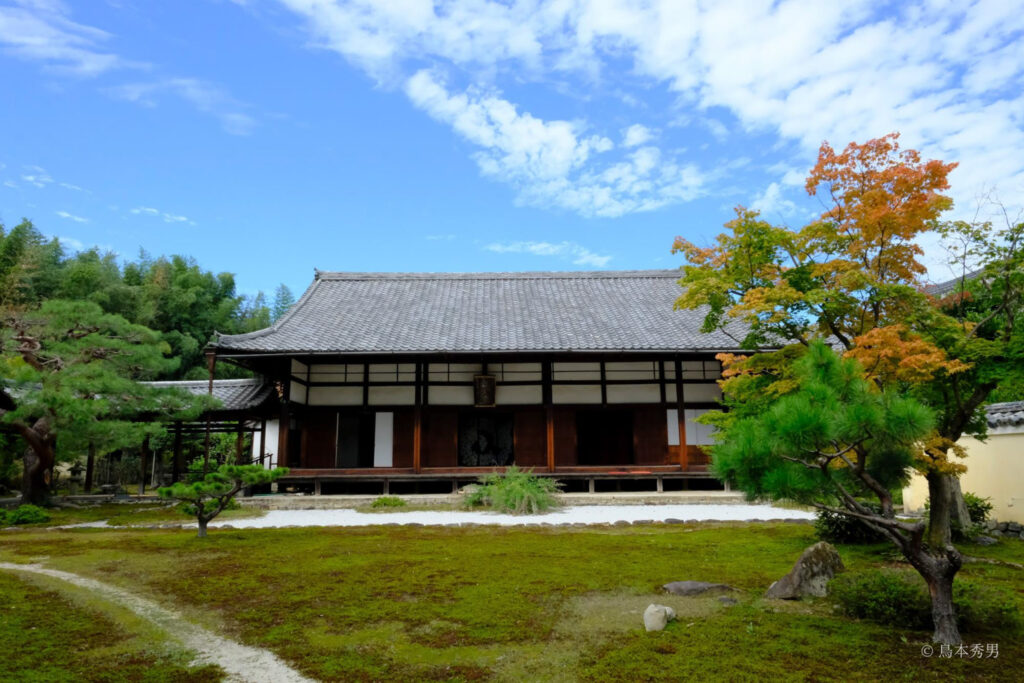
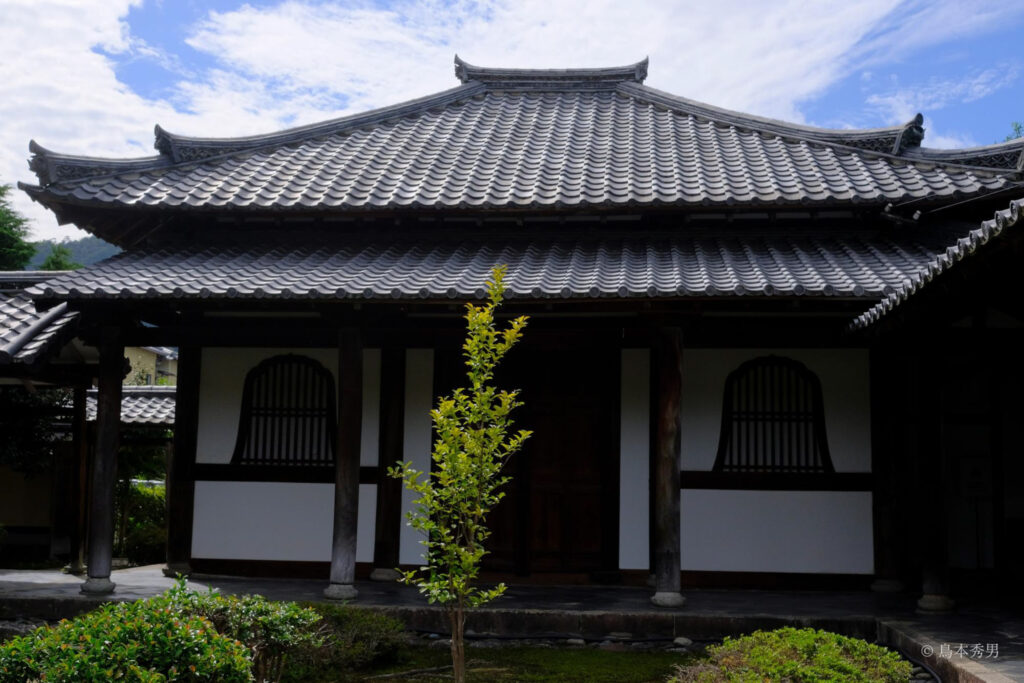
昭堂 - Shōdō Hall
Serving as both the Founders' Hall and the Main Hall, this simple Zen-style structure is located midway along the tiled corridor connecting the Guest Hall and the Reliquary Hall. It houses statues of Shakyamuni Buddha and his Ten Great Disciples. On the right is a statue of the temple's founding master Fumyō Kokushi, and on the left is one of the founder, Yoshimitsu. The hall was rebuilt in 1676 after being destroyed in the Fushimi Earthquake of 1596. Inside, there is an ancient map of the Saga area dating back to the early 15th century.
茶室 - Tea Room
Behind the guest hall is the rear garden, which leads to the tea garden. Here, you'll find the tea room called "Kaishitsu."
The term "Keshi" signifies "insignificant," a humble expression. The name of the room originates from an alternative title for Fumyo Kokushi, a revered Zen master. The room was donated in 1936 by the actor Denjiro Okochi as a secluded chamber and is now utilized as a tea room. Denjiro Okochi practiced Zen under the guidance of Jido Roshi of Rokuoin Temple and inherited the tea room Tekisui-an, associated with the Zen master Tekisui of Tenryu-ji Temple in the early Meiji period. He then established Okochi Sanso Villa at the foot of Mt. Ogura. Both this tea room at Rokuoin and Okochi Sanso Villa were crafted by Kaichiro Fuefuki, a master carpenter of the Showa era renowned for his skill in sukiya-style architecture. Kaichiro, a Kyoto native, honed his craft while practicing the tea ceremony in the Omotesenke school. His architectural works include the tea room "Soku-an" for Ichizo Kobayashi of Hankyu Corporation, the extension of Fushin-an in Omotesenke, and "Jisso-an" at Nanso-ji Temple in Sakai.
The six-mat tea room features a shoin-style design with an alcove, shelves, and a study area. The four-and-a-half-mat room is built in the sukiya style, complete with an alcove, study area, inner Buddha statue, and fukidana (hanging shelf). The meticulous selection of materials and other details reflect Fuefuki Kaichiro's exceptional skill as a sukiya carpenter. The hearth in the six-mat tea room is arranged in the "daimyo temae" style, where the host sits with the alcove at his back.
